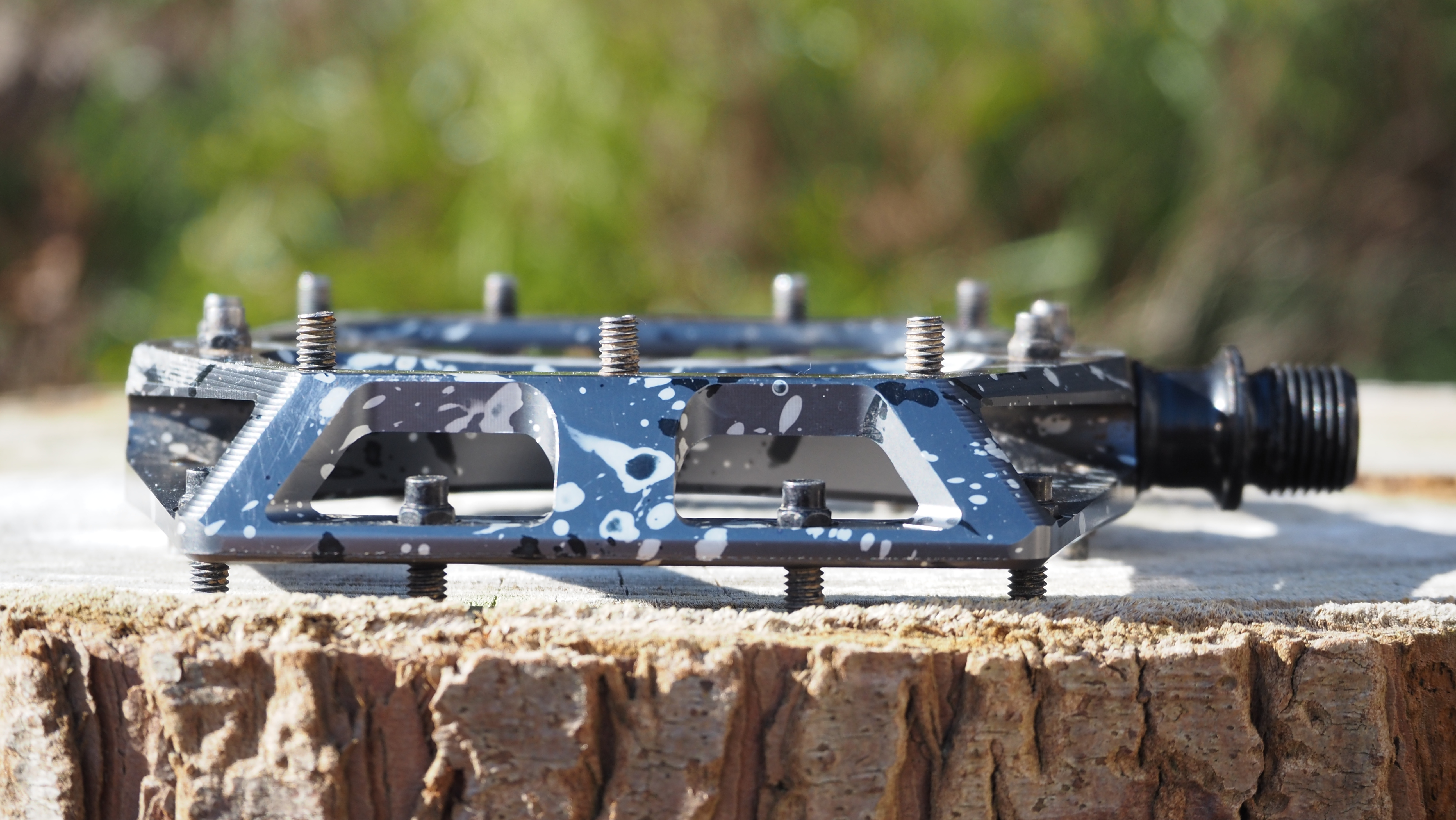Bike Perfect Verdict
A decade after they were first introduced the Vaults still stand up as one of the best flat pedals around. These triple anodized SE versions look fantastic and the hard wearing finish still looks great after many months of riding.
Pros
- +
Super secure grip
- +
Large surface area
- +
Concave footbed
- +
Bombproof construction
- +
Hardy finish
Cons
- -
Thicker pedal body
Why trust BikePerfect
DMR's Vault has long been regarded by many riders as the best MTB flat pedal available. While it now comes in a variety of different options, the fact that its basic design has essentially remained the same over the 10 years or so since launch is testament to its proven capabilities. The DMR Vault has plenty of worthy rivals these days, such as the latest RaceFace Atlas pedal and the Hope F22 to name but two, so how does it compare to these more modern designs and is it still worthy of its position as one of the flat pedal elite?

Design and specifications
The Vaults I've been testing come with an aluminium body, spinning on a cromoly axle with a bushing on the inner end and a cartridge bearing on the other. There are other builds available though, such as the super light DMR Vault Mag SL made using magnesium and titanium. Our Vault SE test pair comes in a fancy 'Liquid Camo Grey' triple anodized finish (and costs an extra $54 /£40), but there's loads of other color and finishing options. Brendon Fairclough and Andreu Lacondeguy have their own signature edition Vaults too.
Whatever they're made from, DMR Vaults all use the same 105mm x 105mm square, concave body and are 17mm thick. They run 11 replaceable steel pins per pedal face, with four stubby, slightly shorter pins either side of the axle to enhance the concave feel.
The leading edges of the pedals are angled and chamfered to help make rock vs pedal fights result in glancing blows rather than full KOs. In fact, lots of of the edges all over the pedal are angled, but this is mostly atheistic rather than functional.

Performance
Grip from the Vaults is excellent. The slight concave allows you push your feet into the pedals when you need maximum security, but foot adjustments are still easy enough to make when you need to. The platform itself is an ideal size for average to large feet, though more petite footed riders would be better off looking at the Vault Midi which is 10 percent smaller than the original.
I've been using this test pair for the past six months in all manner of different riding situations. Many of my local trails are strewn with large loose rocks, so the Vaults have had more than their fair share of encounters with stony lumps during that time. Aside from the odd scraped corner, with the tough anodized finish they're still looking fresh and, better still, are yet to drop a pin.
While 17mm of metal between the pedal faces helps the Vaults shrug off impacts, they are definitely on the more portly side of flat pedal thickness fashions these days. Thinner pedals give a slightly lower center of gravity and a tad less pedal for rocks and other ground level hazards to aim at, though the pay off is usually being less robust.
I pulled out an old battle hardened pair of Vaults that I got when they were first released for comparison. Despite years of abuse, these veteran flatties are still in pretty good nick. Yes, there's scratches, scrapes, rubbed paint and they're in need of a service, but that's all superficial or easily fixable. I did replace a few pins over time, but there was only one that had been ripped out thread and all.
Verdict
The DMR Vault literally set the template for virtually every flat pedal that followed and despite a few variants, the brand has confidently stuck with the 'if ain't broke...' mantra. A great testament to the Vaults is that there are many flat pedal riders won't use anything else and I know people who've been riding on them almost exclusively for a decade.
If you want your pedals to look good for as long as possible then its well worth considering shelling out for the SE version. The anodized finish is extremely durable and was genuinely surprised how good they still looked after many months of hard riding when I scrubbed the mud off to take the photos for this review.
In a world of really good flat pedal options, it's genuinely hard to go wrong these days. However, if you're looking for super dependable grip on a pedal that can laugh off big hits, then the DMR Vault is very hard to beat.
Tech specs: DMR Vault SE pedal
- Price: $220.00 / £160.00 / AU$275.00
- Size: 105 x 105 x 17mm
- Weight: 427g
- Construction: 6061 aluminum body, 4140 cromoly steel axle, steel pins
- Finish: Triple anodized
- Colors: Liquid Camo Grey, Liquid Camo Green
- Rival products: Raceface Atlas, Hope F22, Nukeproof Horizon

Rich Owen joined the BikePerfect team as editor in 2021. He's worked as a journalist and editor for over 24 years, with 12 years specializing in cycling media. Rich bought his first mountain bike (a rigid Scott Tampico) in 1995 and has been riding MTB for almost 30 years.
Current rides: Merida One-Forty 6000, Banshee Paradox, YT Jeffsy Core 3, Saracen Ariel 30 Pro
Height: 175cm
Weight: 69kg

